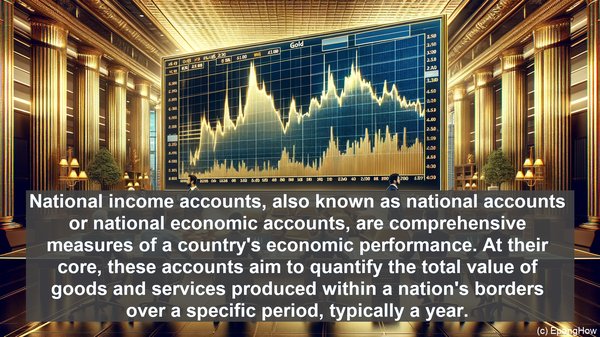Introduction: The Economic Landscape
Hello and welcome! As we navigate the complex world of economics, we often encounter various tools and indicators that provide insights into a nation’s financial health. Two such tools are national income accounts and national wealth accounts. While they may seem similar at first glance, they differ significantly in their scope and purpose. Today, we’ll dive deep into these accounts, unraveling their intricacies and highlighting their unique contributions to economic analysis.
National Income Accounts: Capturing Economic Activity
National income accounts, also known as national accounts or national economic accounts, are comprehensive measures of a country’s economic performance. At their core, these accounts aim to quantify the total value of goods and services produced within a nation’s borders over a specific period, typically a year. The most prominent indicator derived from national income accounts is the Gross Domestic Product (GDP). GDP serves as a yardstick for a country’s economic growth, reflecting the market value of all final goods and services. It encompasses various sectors, including agriculture, manufacturing, and services, providing a holistic view of economic activity.

Components of National Income Accounts
To construct national income accounts, economists consider several components. Firstly, there’s consumption, which refers to the spending by households on goods and services. Then, there’s investment, which includes business spending on capital goods like machinery and infrastructure. Government spending, encompassing public services and infrastructure, is another vital component. Additionally, net exports, the difference between a country’s exports and imports, contribute to the overall national income. By meticulously accounting for these components, national income accounts offer a comprehensive snapshot of a nation’s economic activity.
National Wealth Accounts: Measuring Net Worth
While national income accounts focus on economic activity, national wealth accounts provide insights into a country’s net worth. National wealth, often referred to as national net worth, encompasses a nation’s assets and liabilities. These assets can include physical capital like infrastructure, natural resources, financial assets like stocks and bonds, and even intangible assets like intellectual property. Liabilities, on the other hand, include public debt and other obligations. By quantifying these assets and liabilities, national wealth accounts offer a broader perspective on a country’s financial standing.
Interpreting the Data: Different Insights
The data derived from national income accounts and national wealth accounts offer distinct insights. National income accounts, with their focus on economic activity, provide a real-time snapshot of a country’s production and consumption patterns. They help policymakers gauge the effectiveness of economic policies and identify areas that require attention. On the other hand, national wealth accounts offer a long-term perspective. By assessing a nation’s assets and liabilities, they shed light on its economic sustainability and intergenerational equity. Both sets of accounts, when used in conjunction, provide a comprehensive understanding of an economy.

